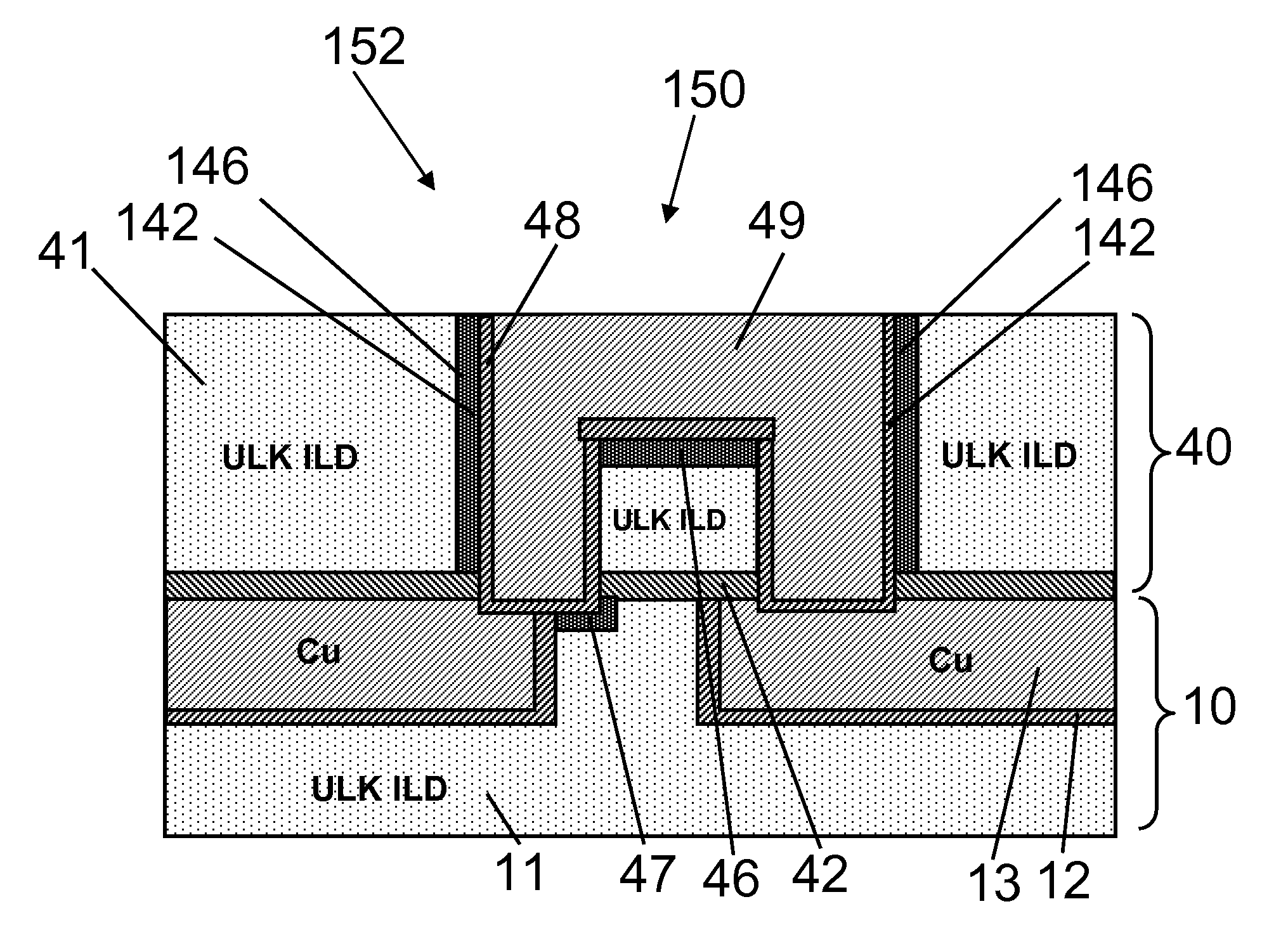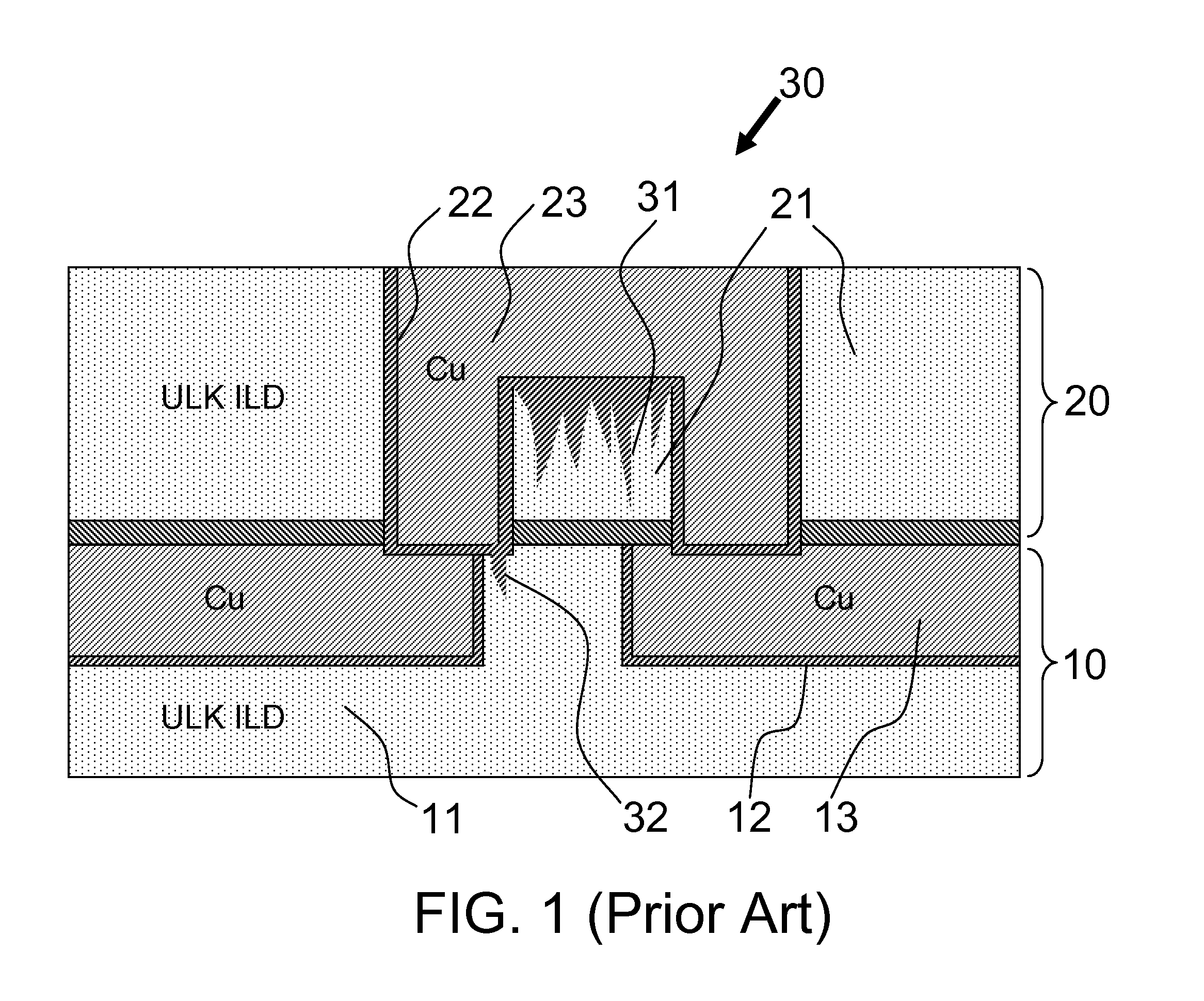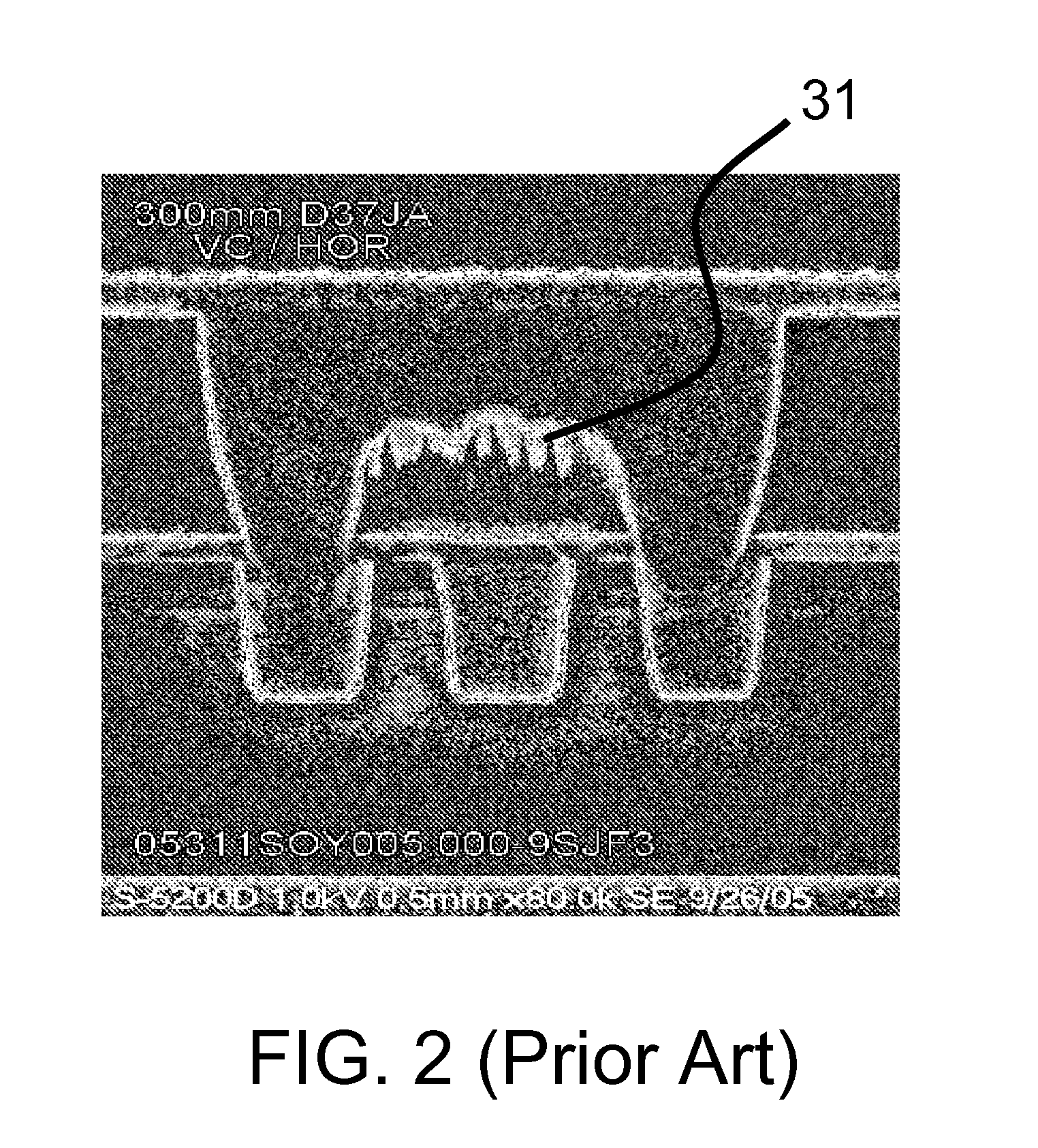Method of repairing process induced dielectric damage by the use of gcib surface treatment using gas clusters of organic molecular species
a surface treatment and organic molecular species technology, applied in the field of methods, can solve the problems of trench and via sidewalls of porous ulk dielectrics, performance degradation of metal contacts, shorting of semiconductor devices, etc., and achieve the effect of reducing the damage of the sidewalls
- Summary
- Abstract
- Description
- Claims
- Application Information
AI Technical Summary
Benefits of technology
Problems solved by technology
Method used
Image
Examples
Embodiment Construction
[0041]As is known in the art, manufacture of a semiconductor device may include processing of, for example, a front end of line (FEOL) and a back end of line (BEOL). During a FEOL processing, semiconductor devices such as, for example, switches and logic gates may be produced. These devices may be interconnected through one or more interconnect structures. The interconnect structures may be produced through a BEOL processing.
[0042]A conventional BEOL processing may include steps such as, for example, cap deposition, ILD deposition, hard mask or photo-mask deposition, lithography, and etching, among other steps. For the interest of not obscuring the presentation of the essences of present invention, processing steps that are well known in the art may not be described below in detail, but rather the following description will focus on the distinctive elements of the present invention.
[0043]FIG. 1 is a schematic illustration of an interconnect structure as is known in the art. Intercon...
PUM
| Property | Measurement | Unit |
|---|---|---|
| temperature | aaaaa | aaaaa |
| temperature | aaaaa | aaaaa |
| wavelength | aaaaa | aaaaa |
Abstract
Description
Claims
Application Information
 Login to View More
Login to View More - R&D
- Intellectual Property
- Life Sciences
- Materials
- Tech Scout
- Unparalleled Data Quality
- Higher Quality Content
- 60% Fewer Hallucinations
Browse by: Latest US Patents, China's latest patents, Technical Efficacy Thesaurus, Application Domain, Technology Topic, Popular Technical Reports.
© 2025 PatSnap. All rights reserved.Legal|Privacy policy|Modern Slavery Act Transparency Statement|Sitemap|About US| Contact US: help@patsnap.com



